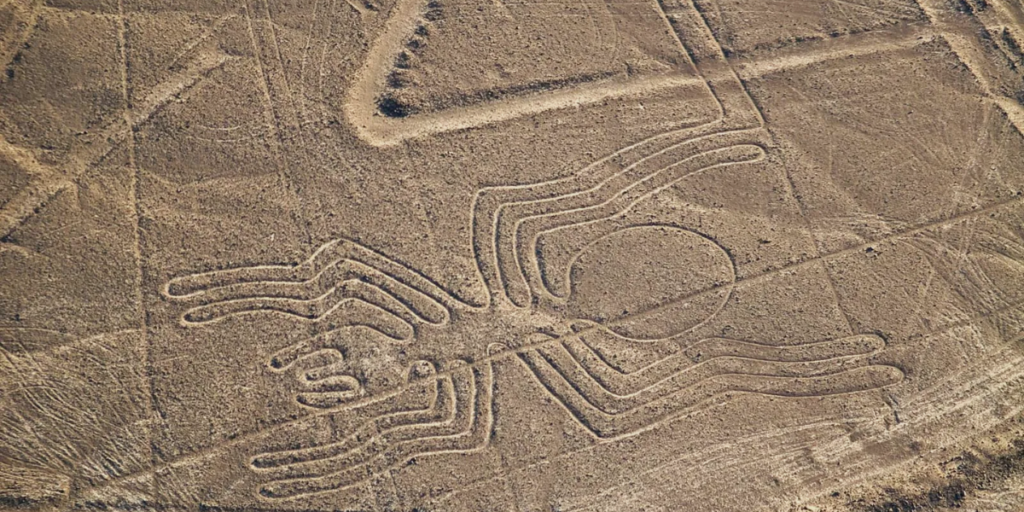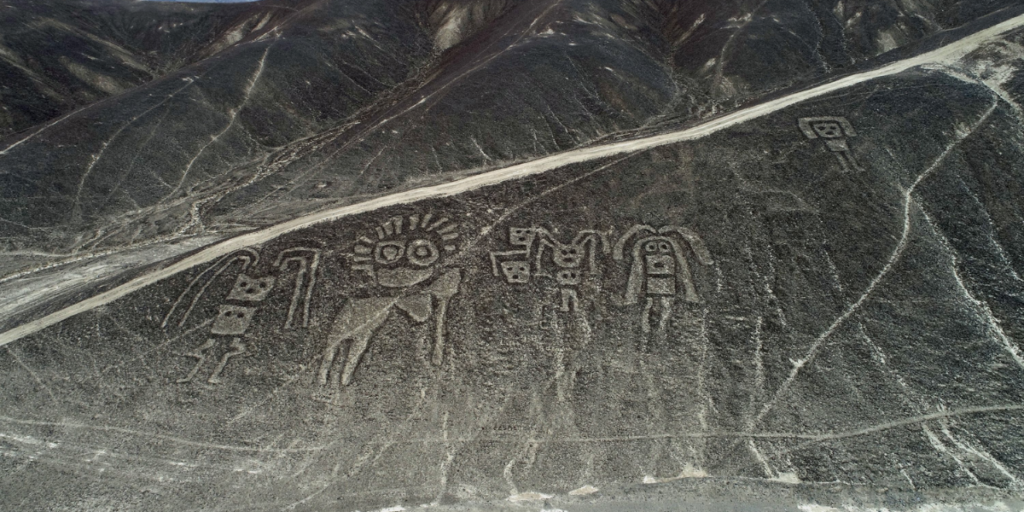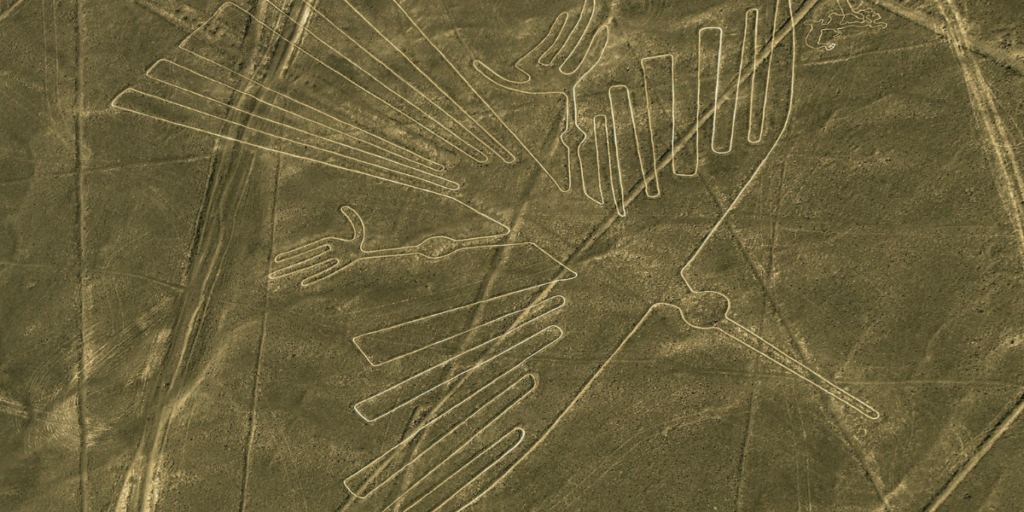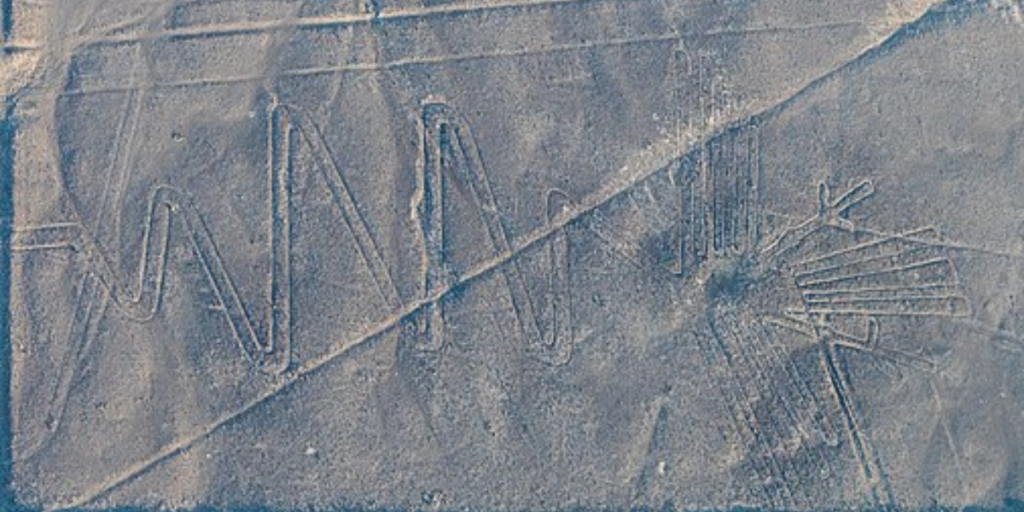In the arid plains of the Peruvian coastal plain, a mysterious expanse of geoglyphs—known as the Nazca Lines—has puzzled scientists, historians, and tourists for decades. These ancient designs etched into the earth’s surface, stretch across nearly 1,000 square kilometers and encompass hundreds of figures, from simple lines to intricate depictions of animals, plants, and humanoid figures. The Nazca Lines offer a glimpse into the ingenuity and creativity of the ancient Nazca culture, yet they also remain one of archaeology’s most enduring mysteries.
Origins and Discovery
The Nazca Lines were created by the Nazca people, who thrived in southern Peru between 200 BCE and 600 CE. This pre-Incan civilization developed advanced agricultural techniques and complex societal structures, but it is their geoglyphs that have captured the world’s imagination.
The existence of the lines was first brought to global attention in the early 20th century. Peruvian archaeologist Toribio Mejía Xesspe stumbled upon the geoglyphs in 1927 while hiking through the foothills. However, it wasn’t until the advent of flight that their full scope could be appreciated. American historian Paul Kosok, flying over the desert in the 1930s, famously described the Nazca Lines as “the largest astronomy book in the world,” thus igniting a wave of scholarly interest.
Creation and Preservation
The creation of the Nazca Lines is a testament to the ingenuity and dedication of the Nazca people. By removing the top layer of reddish-brown iron oxide-coated pebbles to reveal the lighter-colored earth beneath, they were able to create striking contrasts visible from the air. The dry, windless, and stable climate of the Nazca Desert has contributed significantly to the preservation of these lines over the centuries.
The Nazca Lines consist of three basic types: straight lines, geometric shapes, and pictorial representations. The straight lines can stretch for several kilometers and intersect with various geometric shapes such as triangles, trapezoids, and spirals. The pictorial geoglyphs depict a range of subjects, including animals like hummingbirds, monkeys, and spiders, as well as human-like figures.
Theories and Interpretations
Despite extensive research, the purpose and significance of the Nazca Lines remain topics of debate. Over the years, numerous theories have been proposed, each adding a layer of intrigue to these ancient geoglyphs.
Astronomical Calendar
Paul Kosok’s initial theory posited that the Nazca Lines functioned as an astronomical calendar, aligning with celestial bodies and solstices. Maria Reiche, a German mathematician and archaeologist, further developed this idea, dedicating her life to studying the lines. She believed the geoglyphs represented a sophisticated astronomical and agricultural calendar, guiding the Nazca people in their farming activities.
Religious and Ceremonial Significance
Another prevalent theory suggests that the lines held religious or ceremonial significance. Some researchers propose that the geoglyphs were created as part of water-related rituals, aimed at invoking the gods’ favor for rain in the arid region. The presence of figures like the “Hummingbird,” which in Andean mythology is associated with fertility and rain, lends some weight to this hypothesis.
Pathways and Pilgrimages
Recent research has also considered the possibility that the lines served as ceremonial pathways. Archaeologist Clive Ruggles and anthropologist Anthony Aveni have suggested that the lines could have been walked upon during ritual processions. The alignment and interconnectivity of various lines and shapes might indicate a complex system of routes used for religious or social gatherings.
Extraterrestrial Influence
One of the more sensational theories, popularized by Swiss author Erich von Däniken in his 1968 book “Chariots of the Gods?,” posits that the Nazca Lines were created or influenced by extraterrestrial beings. This idea, though widely dismissed by the scientific community, has fueled popular imagination and further mystified the Nazca Lines.
Preservation Efforts and Tourism
Today, the Nazca Lines are a UNESCO World Heritage Site, drawing thousands of tourists each year who view the geoglyphs from planes or observation towers. However, this influx of visitors poses a challenge for preservation. The delicate lines are vulnerable to human activity, and illegal encroachments and vandalism have caused damage to some figures.
Efforts to protect and preserve the Nazca Lines are ongoing. The Peruvian government, alongside international organizations, has implemented measures to monitor and control access to the site. Advanced technology, such as satellite imagery and drones, is also being utilized to study the geoglyphs without causing physical harm.
Conclusion:
The Nazca Lines stand as a remarkable testament to the ingenuity and creativity of the Nazca civilization. While much about these ancient geoglyphs remains shrouded in mystery, they continue to inspire awe and curiosity. Whether serving as an astronomical guide, a ceremonial pathway, or an offering to the gods. The Nazca Lines are a profound reminder of humanity’s enduring quest to understand and connect with the world around us. As research progresses and preservation efforts continue. We may yet uncover more of the secrets held by these enigmatic designs etched into the Peruvian desert.






